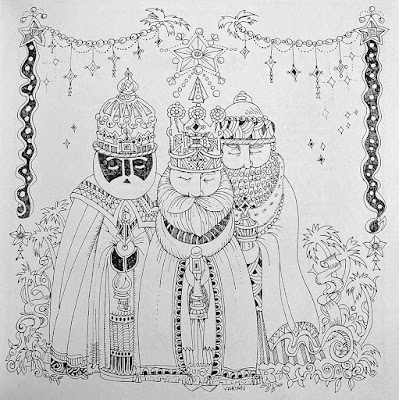I recently ran across another addition for my midcentury modern collection.
This one is from 1973, so it's a bit late for the style. And indeed, there are
elements that might be better labeled as part of the greeting card
subgroup.
The author, Malcolm Whyte, is best known as the founder of the Cartoon Art Museum in San Francisco. He was also started and ran the publishing house that printed the book, Troubador Press, which, I later found out, began life as a printer of greeting cards. It then made the shift to book publishing, specializing in children's materials.
I couldn't find much about the artist, Varian Mace, except that Varian
was a woman who became a well-known watercolorist who lived (or still
lives?) in Visalia, California. I think she must have been fairly young when she illustrated this book.
Each spread in the book features a full-page black and white illustration across from a page of short text explaining an aspect of Christmas traditions, some secular, some religious.
A brief history of Christmas cards says that the earliest known card was in Germany in the mid-1400s, with real adoption happening by the mid 1800s as printing became cheaper through new technologies. The text notes that 5 billion cards are exchanged each season. (I wonder if that number is still anywhere near as high.)
The history of Santa is very matter-of-fact, starting with the 4th century Bishop and ending with Thomas Nast's drawings.
I particularly like the illustration of the three magi. According to the text, their number varied in the telling from two to 12, but settled in at three by the 6th century. They were Zoroastrians, it says. The symbolism of their gifts is explained, as well as which lands they were said to rule. And it reminds the reader that the magi arrived on Epiphany, the 12th day of Christmas.
I wonder how it was that Mary and Joseph were hanging out in the manger for almost two weeks.
No little drummer boys are mentioned in the book.







No comments:
Post a Comment